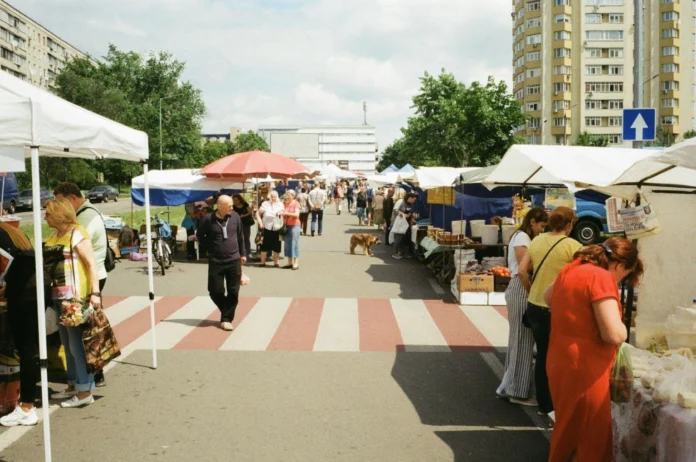And you’re not alone. Many Tucson neighborhoods are rich in culture but light on digital presence. That creates a gap, not just in communication, but in identity. If a neighborhood doesn’t exist online, it risks being overlooked, especially by newcomers, local press, or potential small business collaborators.
Table of Contents
Frequency of Local Discovery — Community Over Content
In Tucson, most people discover their neighborhoods through real life first, say mural walks, food trucks, community gardens, or casual conversations outside a local café. These experiences shape their sense of place. But for those new to town, those moments often start with a search bar, not a sidewalk. That’s why having a digital footprint that reflects the unique identity of a neighborhood is more than helpful, it’s essential.
Rather than settling for a Google Maps pin or relying on scattered Facebook posts, Tucson communities can benefit from building their own neighborhood hubs online.
Here’s a breakdown of how different types of digital presence impact community engagement:
| Digital Presence Type | Typical Use | Limitations |
|---|---|---|
| Google Business or Maps Pin | Location and hours | No personality, can't host rich updates |
| Facebook Group | Casual updates and photos | Hard to search, not everyone uses Facebook |
| Dedicated Neighborhood Site | Events, history, photos, resources | Requires setup, but gives full ownership |
Core Features That Help Neighborhood Sites Thrive
Want your community site to actually work? Focus on tools, not trends.
Here are the essentials that make neighborhood pages useful:
- Event calendar that works on desktop and mobile
A functioning calendar is the backbone of any local site. - Simple blog or updates section for neighborhood news
Having a place to post recent announcements, lost-and-found items, or even seasonal messages builds consistency. - Gallery of local highlights (murals, landmarks, outdoor events)
Visitors and new residents love seeing what makes a place feel lived-in. - Contributor features so residents can submit stories or photos
Enabling residents to share updates, essays, or even brief photo captions gives people a sense of ownership. - Newsletter sign-up that respects privacy (no creepy trackers)
Use a clean sign-up form with a clear explanation: “Monthly updates, no spam, unsubscribe anytime.” When trust is the goal, transparency is the feature.
These five essentials create a foundation that’s easy to manage but meaningful to the people who use it. They’re about making it easier for neighbors to show up, speak up, and stay connected.
Inspired by Other Creative Community Platforms
You don’t have to invent this from scratch. In New York, some neighborhood associations and grassroots orgs have built small but mighty platforms to keep locals engaged.
- Fort Greene’s Community Events Site (Brooklyn, NY): Acts as a digital bulletin board for events, community meetings, and local notices. Helps residents stay informed without relying on scattered social media updates.
- Block-Level Digital Boards in Queens: Offer real-time updates on neighborhood happenings, from sidewalk art shows to street cleanings. Their simplicity makes them easy to maintain and trusted by locals.
- Lower East Side History Project (Manhattan, NY): Blends education and community with a platform that hosts walking tours, historical archives, and cultural events—keeping the neighborhood’s heritage alive and accessible.
- People of Parkside Sunset (San Francisco, CA): Highlights local voices through interviews, artist spotlights, and grassroots updates, creating an ongoing narrative of community identity.
These platforms are often designed and maintained by small creative studios or freelance teams who know how to translate local culture into digital presence.
Some of these neighborhood creators tap into collective developer resources like collaborations with web developers in New York to fuse storytelling and city DNA into digital platforms that actually serve residents.
Tucson has no shortage of creative talent. But seeing how other cities use digital to reinforce, not replace, local life can spark ideas we adapt and make our own.
Also Read : Why Academic Writing Help Is the Smart Choice for Today’s Students
How Tucson Neighbors Can Start (Digitally) Building Identity Today
Not sure where to start? Here’s a roadmap to help Tucson neighborhoods kickstart their digital identity:
- Pick a platform that’s easy to update
- Buy a memorable domain name.
- Set up a reliable hosting provider
- Collect authentic local imagery
- Start small: a homepage, an about section, and a calendar
- Create a brand kit or visual style guide
- Add ways for people to contribute
- Link your site to relevant local platforms
- Test the mobile experience
- Gather feedback and iterate
If you have tech-savvy neighbors, great. If not, pair up with local developers, students, or even regional partners to get the basics live. Many community-minded devs are happy to lend a hand when the goal is building something useful, not commercial.
